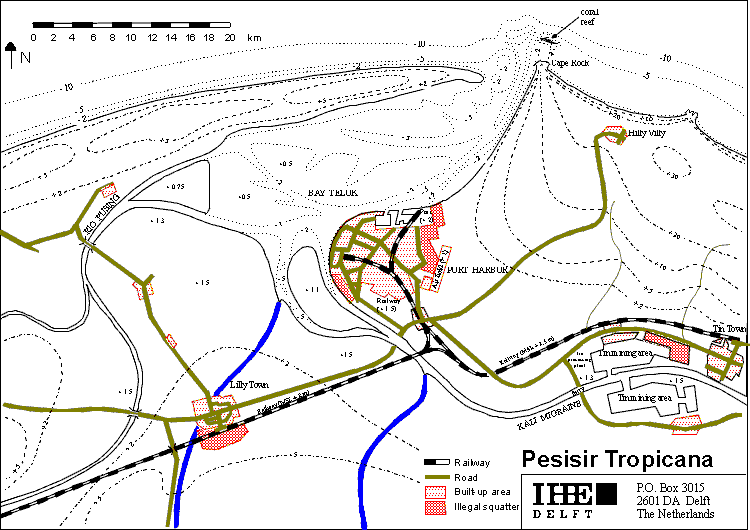
Pesisir Tropicana is situated in a tropical area. The region covers approximately 3,200 km2 with 600.000 inhabitants. The region can be split into two areas:

The Region offers possibilities for hydropower development, production of timber, mining, development of tourism, aquaculture and intensification of agriculture. At the moment none of these resources is exploited, apart from tin mining and small-scale timber production.
A limiting factor is the absence of good transport facilities in the inland region. During the wet season most of the roads are either flooded or otherwise impassable. Transport by boat is of local importance but due to the meandering of the river and the occurrence of rapids and sand-banks navigation is only possible in the delta region and the lower reaches of the river.
The traditional land-use in most of the region consists of small-scale agriculture and fishing. As tourism is becoming more important economic benefits could be obtained by the establishment of protected areas. Especially the coastal region offers opportunities for development in the form of beaches and coral reefs and islands. In the region some animal and plant species occur that are rare or absent elsewhere in the country. Moreover some of the coastal and inland wetlands are important for migratory birds.
Development in the coastal region has consisted until now mainly of utilization of the mangrove forest for timber and fire wood. Locally shrimp production has started and is now rapidly expanding.
Improved irrigation would partially solve the need for more agricultural land, both for the production of cash crops for export or for food production. On a national scale the demand for energy is increasing and the hydropower potential of the region is of considerable interest. It could also be a key factor for the exploitation of the mineral resources in the region. The existing forest could be exploited both for timber and for paper production. As a result of the topography, climate and soil types in the area the risk of erosion is however considerable.
In the dry season ground water is used as the drinking water supply.
There is a large urban complex, Portharbor, with port and industrial facilities, with a well-developed service sector. Traditional fishing mainly takes place in the coastal waters. In the hinterland, various types of primary production take place, including agriculture and mining. Wage levels, existing pollution control and production technologies are comparable with those of many countries in tropical areas.
At this moment a dam in the Rio Pusing is under construction; this dam will provide energy and water to this region.